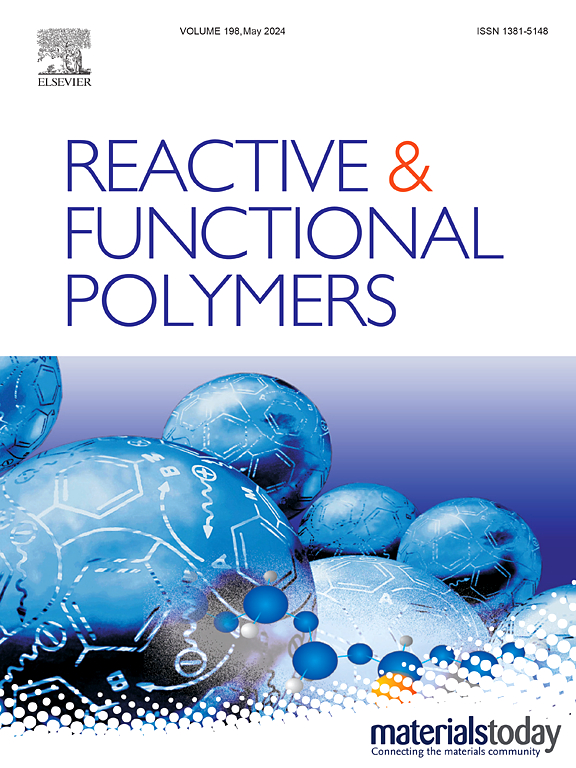Linear polysilsesquioxane hybrid thermosetting polyimide as antioxidant coating for organic composite to improve long-term thermo-oxidative stability
IF 4.5
3区 工程技术
Q1 CHEMISTRY, APPLIED
引用次数: 0
Abstract
Organic thermosetting polyimide (TSPI) is prone to degrade with long-term exposure in oxidative high-temperature environment. To address this issue, linear polysilsesquioxane (LPSQ) hybrid TSPI was prepared and selectively applied on the surface of organic TSPI composite to achieve in situ formation of the antioxidant coating at high temperature. The LPSQ with both 3-[(4-phenylethynyl)phthalimide]propyl groups and phenyl groups bonded to silicon atoms (LPSQ-PE) was synthesized, and used as a reactive polymeric modifier to prepare hybrid TSPI resin. The physical interaction between imide groups and crosslinking linkages generated from phenylethynyl groups in LPSQ-PE and TSPI led high Tgs of hybrid resin, exceeding 450 °C. The hybrid rein with LPSQ-PE content of 50 wt% gave a mass retention twice higher than TSPI after isothermal heating at 500 °C for 2 h in air, due to formation of continuous layer containing silicon and oxygen-rich inorganic compounds on the surface. Because reactive group content in LPSQ-PE was precisely adjusted to be consistent with the reactive endcapper content in TSPI oligomer, the hybrid resins exhibited good mechanical performance. The composite with designed distribution and content of LPSQ in the direction of thickness was fabricated. After isothermal heating at 400 °C for 100 h in air, the fabricated composite gave a flexural strength 39.61 % higher than that of organic TSPI composite. This work would offer useful insight for fabricating structural composites worked in oxidative high-temperature environment for long times.

求助全文
约1分钟内获得全文
求助全文
来源期刊

Reactive & Functional Polymers
工程技术-高分子科学
CiteScore
8.90
自引率
5.90%
发文量
259
审稿时长
27 days
期刊介绍:
Reactive & Functional Polymers provides a forum to disseminate original ideas, concepts and developments in the science and technology of polymers with functional groups, which impart specific chemical reactivity or physical, chemical, structural, biological, and pharmacological functionality. The scope covers organic polymers, acting for instance as reagents, catalysts, templates, ion-exchangers, selective sorbents, chelating or antimicrobial agents, drug carriers, sensors, membranes, and hydrogels. This also includes reactive cross-linkable prepolymers and high-performance thermosetting polymers, natural or degradable polymers, conducting polymers, and porous polymers.
Original research articles must contain thorough molecular and material characterization data on synthesis of the above polymers in combination with their applications. Applications include but are not limited to catalysis, water or effluent treatment, separations and recovery, electronics and information storage, energy conversion, encapsulation, or adhesion.
 求助内容:
求助内容: 应助结果提醒方式:
应助结果提醒方式:


